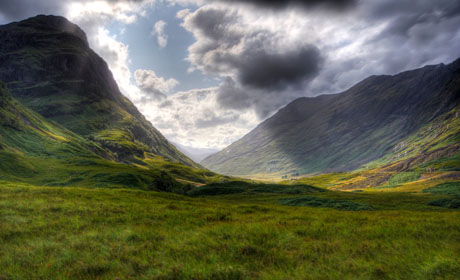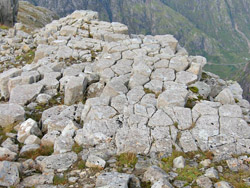Glencoe
Lochaber, Highlands, Scotland
 The People’s Choice
The People’s Choice
Glencoe, in addition to offering one of the most stunning views in Scotland, is also attributed to being one of the best-exposed examples of cauldron subsidence. The origins of the volcanic rocks posed many problems for the early geologists such as Robert Jameson (1774 – 1854) and John MacCulloch (1773 – 1835) who visited the glen in the early 1800′s. Many theories were proposed on the formation of the rocks, but it was not until the early 1900′s that Sir Edward Bailey (1881 – 1965) first understood its origins. Research into the finer details of the nature of the eruptions and subsidence is still ongoing.
Approximately 1200m of mostly volcanic sequences have been identified at Glen Coe. The sequence is found within a down-faulted block in an elliptical ring fracture (approximately 16km by 8km).

Thick sequences of basaltic and andesitic lavas are thought to be associated with the outpourings of the Lower Old Red Sandstone Lorne Plateau lavas, further to the south. However, the glen’s rhyolitic sequences are thought to have originated from vents within the caldera.
Most of the major peaks within the glen consist of the lava flows. The ring fracture is believed to have acted as the feeder channels for two phases of ignimbrites flows.
Volcanic activity over the life of the caldera was interspersed with non-eruptive phases. During these times, sedimentary rocks formed and therefore form part of the entire sequence. Fossilised plants have been discovered within these rocks.
Text from ScottishGeology.com
Explore Glen Coe on Google Street View